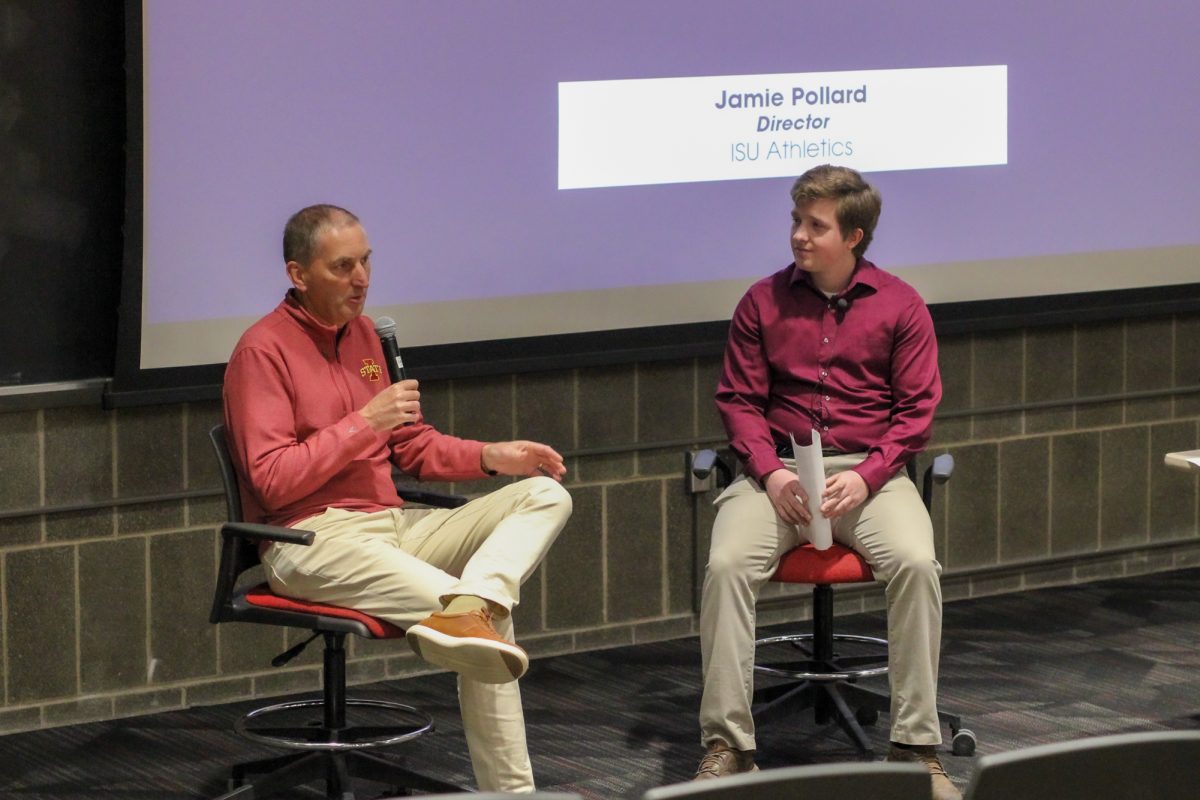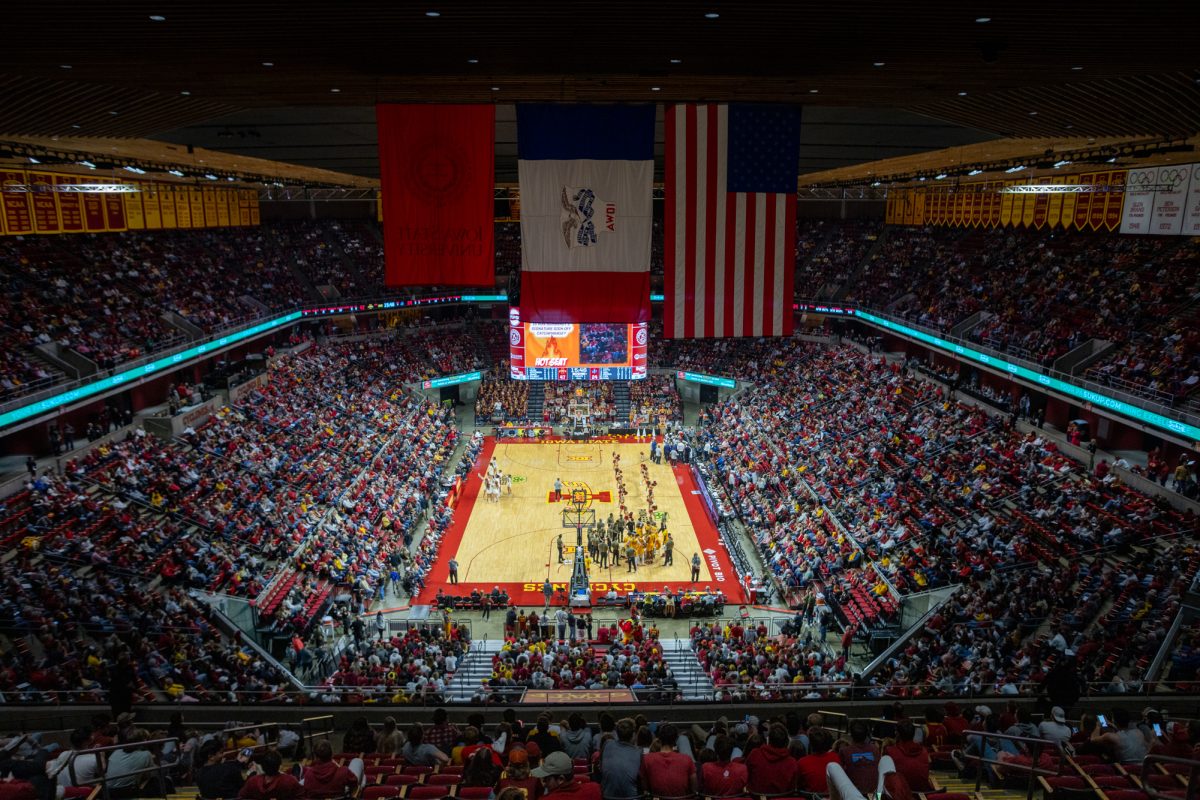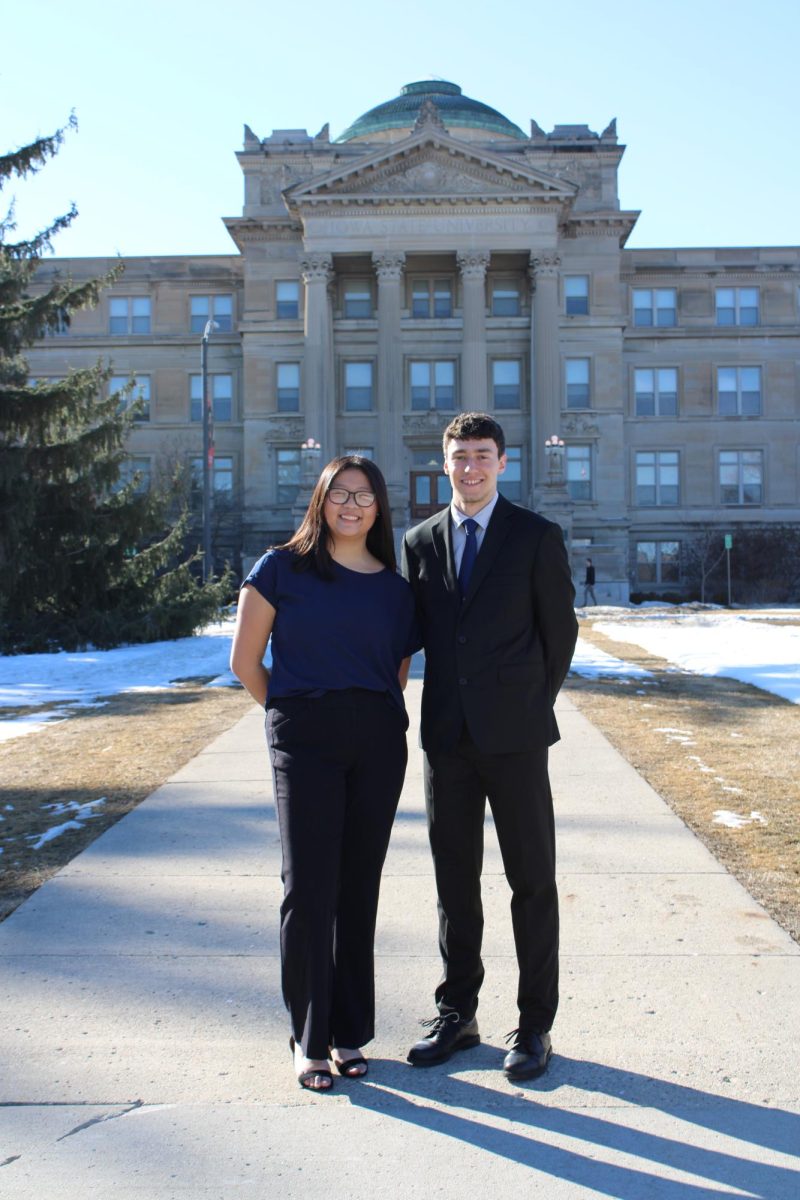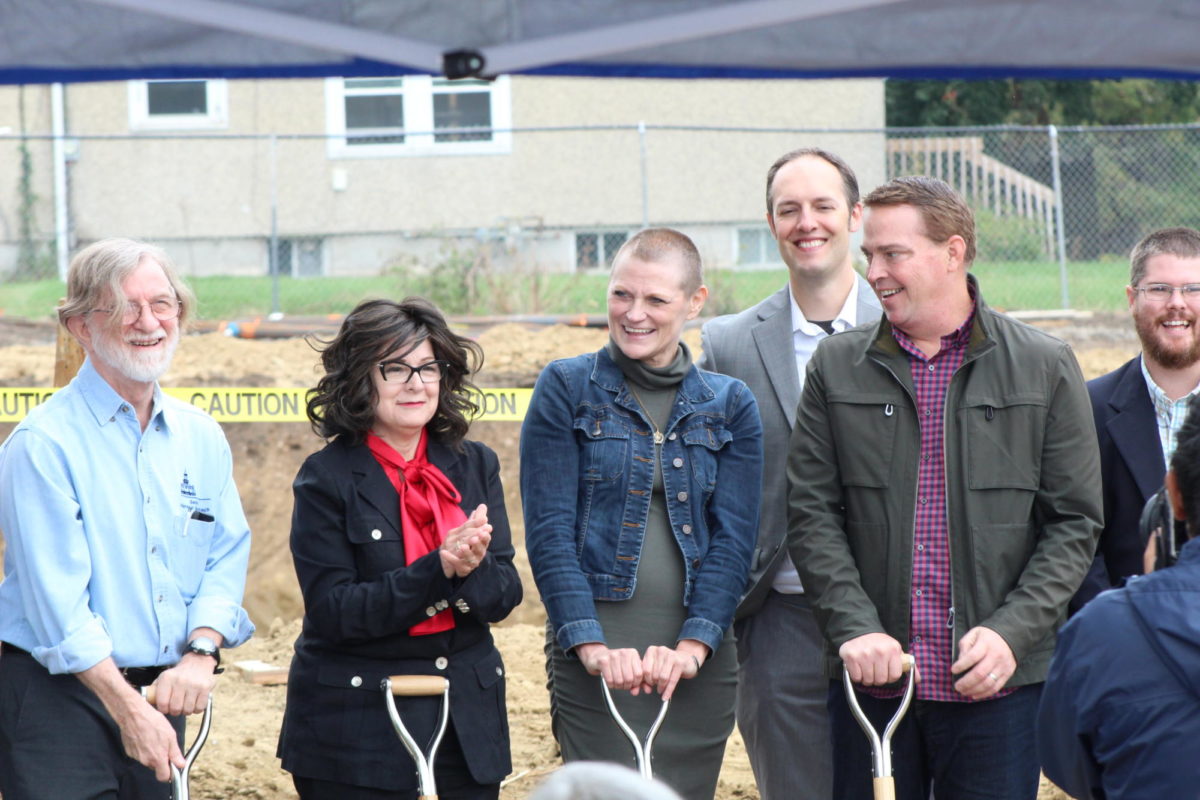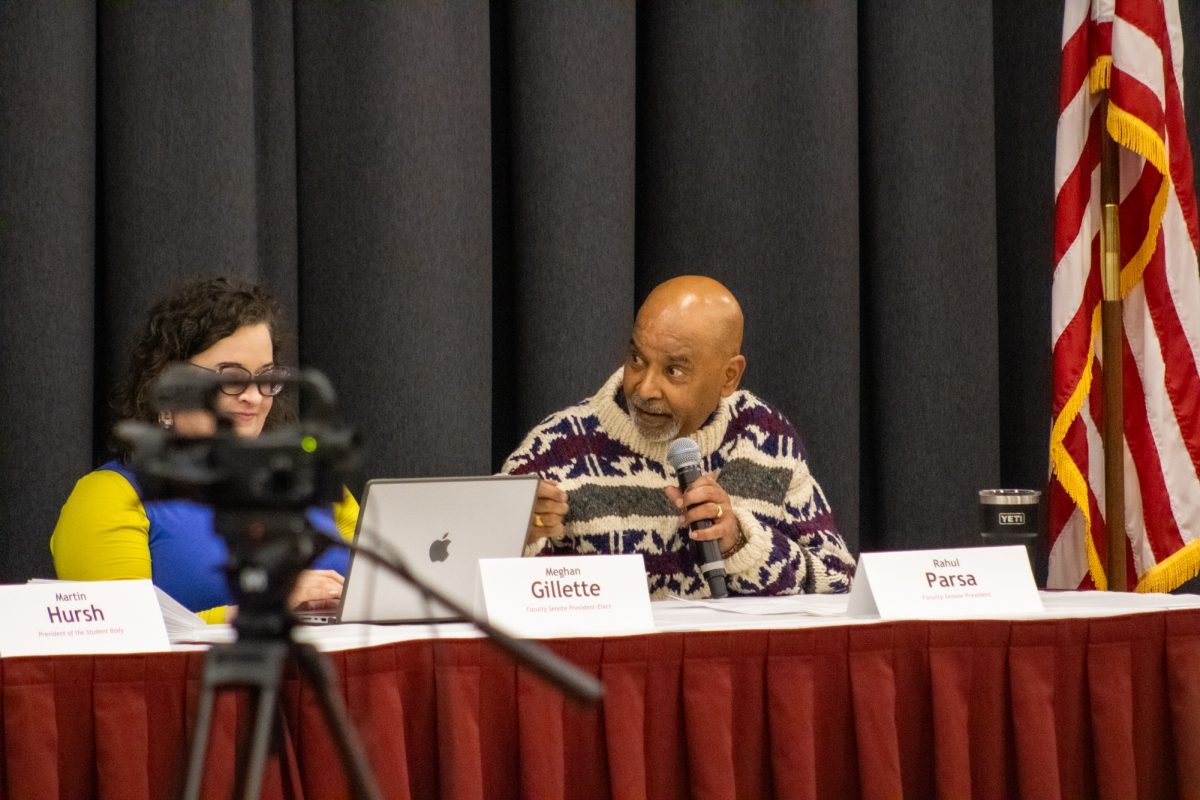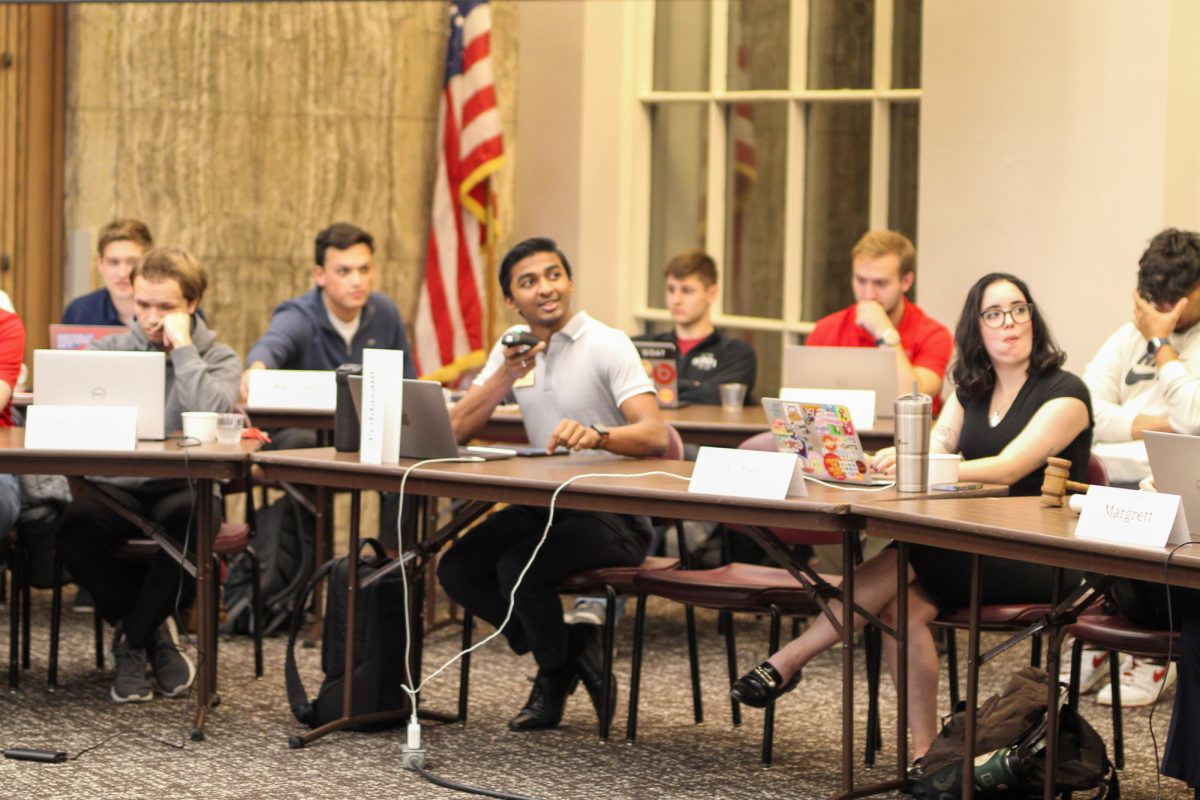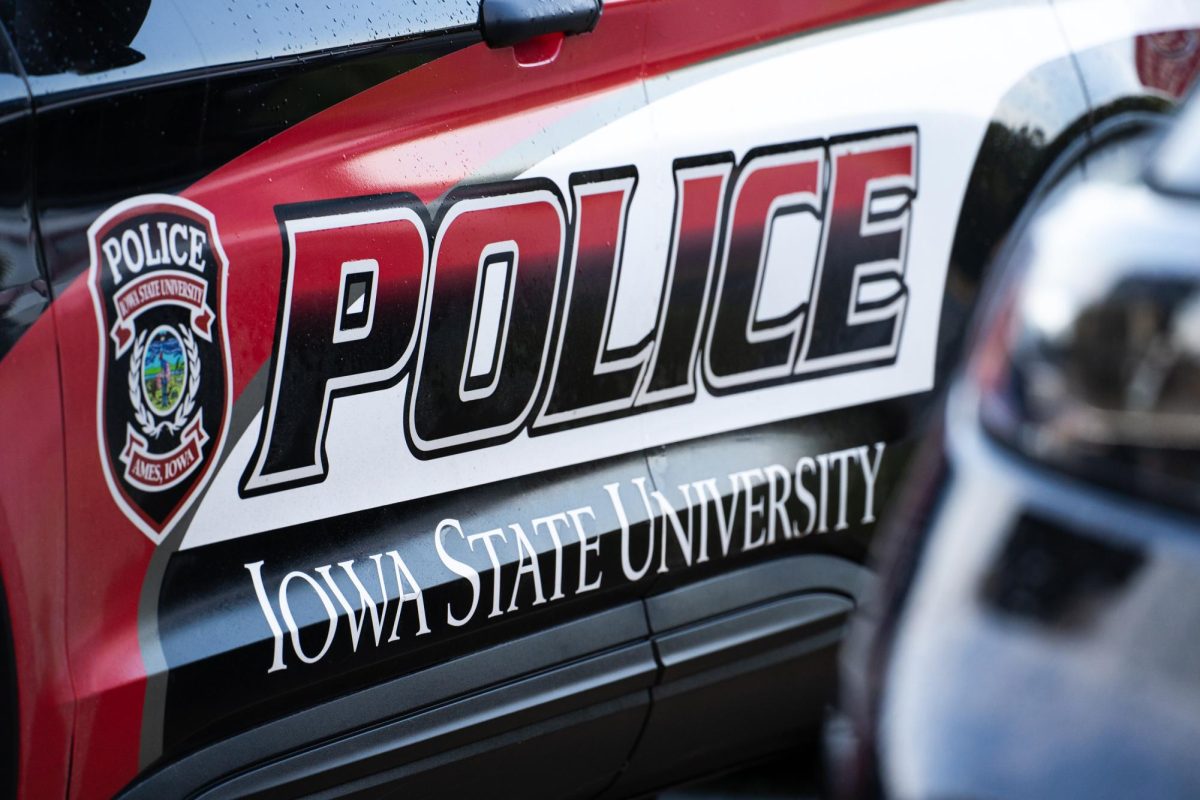Iowa State Athletic Director Jamie Pollard answered questions from students and discussed Iowa State athletics, student-athletes, and CyTown during the final installment of Student Government’s “Know Your Leaders” Town Hall Series.
Student Government began the series to allow students to meet campus decision-makers to ask questions and share their opinions on important topics.
Alcohol in Jack Trice
Selling alcohol in Jack Trice Stadium and Hilton Coliseum has been a controversial topic and question throughout the Iowa State athletics department.
“It is a much more complicated issue than most people even realize. There are a whole host of issues servicing that,” Pollard said. “The stadium is not set up for it. If you think the lines are long today and the concorses get blocked by people now, add beer to it, and you aren’t walking through it.”
Iowa State Police Department Chief Michael Newton spoke in the same series on Feb. 4 about underage drinking violations and their population around campus, including big events like tailgating and football games.
“My second reason is behavioral issues. I get to see what our police department deals with post-game,” Pollard said. “People are slobs. People are flat-out slobs, and that’s without selling alcohol.”
The athletics department listens to Iowa State fans’ feedback but questions if the recommendation of alcohol sales is truly fans’ feedback or just students.
“Number three is I’m not convinced the people that buy our seats in the stadium actually really want it,” Pollard said. “They don’t want the drunk slob behind them spilling beer on them because they haven’t had their first beer ever.”
Ultimately, the athletics department cannot wholly control whether Iowa State sells alcoholic beverages in its stadiums.
“At the end of the day, it doesn’t matter what Jamie Pollard thinks; it’s not my call. It’s the president’s call and the police chief’s call,” Pollard said. “If you can’t refrain from drinking for three and a half hours from the game, then don’t come to the game. I don’t care.”
Black and white uniforms
Recently, Iowa State has received some backlash on social media due to its black and white uniforms in basketball and football.
“So our colors are cardinal and gold, and we are very proud of our colors being cardinal and gold, but at the same time, I’d be really misplaced if I didn’t listen to our student-athletes,” Pollard said. “Our student-athletes want variation. Your generation wants variety, and so I am reminded all the time when I am in front of our student-athletes I have a responsibility to listen to them and they like wearing black.”
For the first 50 years of Iowa State, the colors included black, gold and silver.
“Juicy Wiggle is a tradition. Sweet Caroline is a tradition. To our football players, wearing black uniforms is the form of their tradition,” Pollard said. “So why can’t we have both?”
Pollard credits success to culture
Iowa State football finished the season ranked No. 15 and PopTart Bowl champions. The men’s basketball team is ranked no. 9, and the women’s is 19-10.
“I would say a big reason why our athletics are going really well is because of our amazing culture,” Pollard said. “Our culture wasn’t formed overnight. It has been formed over a long period of time, and the biggest part of that culture has been consistency and leadership.”
Matt Campbell has been the football coach since 2016, and T.J. Oztelberger has been the head basketball coach since 2021.
“When you have continuity of leadership, you can really get a lot of traction because, quite frankly, a lot of things can’t happen in just a year,” Pollard said. “Continuity of leadership is a really important part of success and maintaining success. Keeping the right leaders and as long as we can is equally as important.”
CyTown
Currently, Iowa State is working on building CyTown, which will occupy the area now known as “Tent Row” between Jack Trice Stadium and the Iowa State Center.
“What I think the biggest impact of CyTown will be is the revitalization of what James Hilton had his vision back in the 1950s,” Pollard said. “It was to create something really unique on the Iowa State campus that would be a draw for students, faculty, staff, residents, central Iowa and the state of Iowa.”
“What I get excited about is what we’re talking about doing is revitalizing this space that doesn’t cost the students anything, doesn’t cost athletics anything, doesn’t cost the university anything,” Pollard said. “We basically took the land that we owned and found a way to repurpose it and maximized the use of it.”


